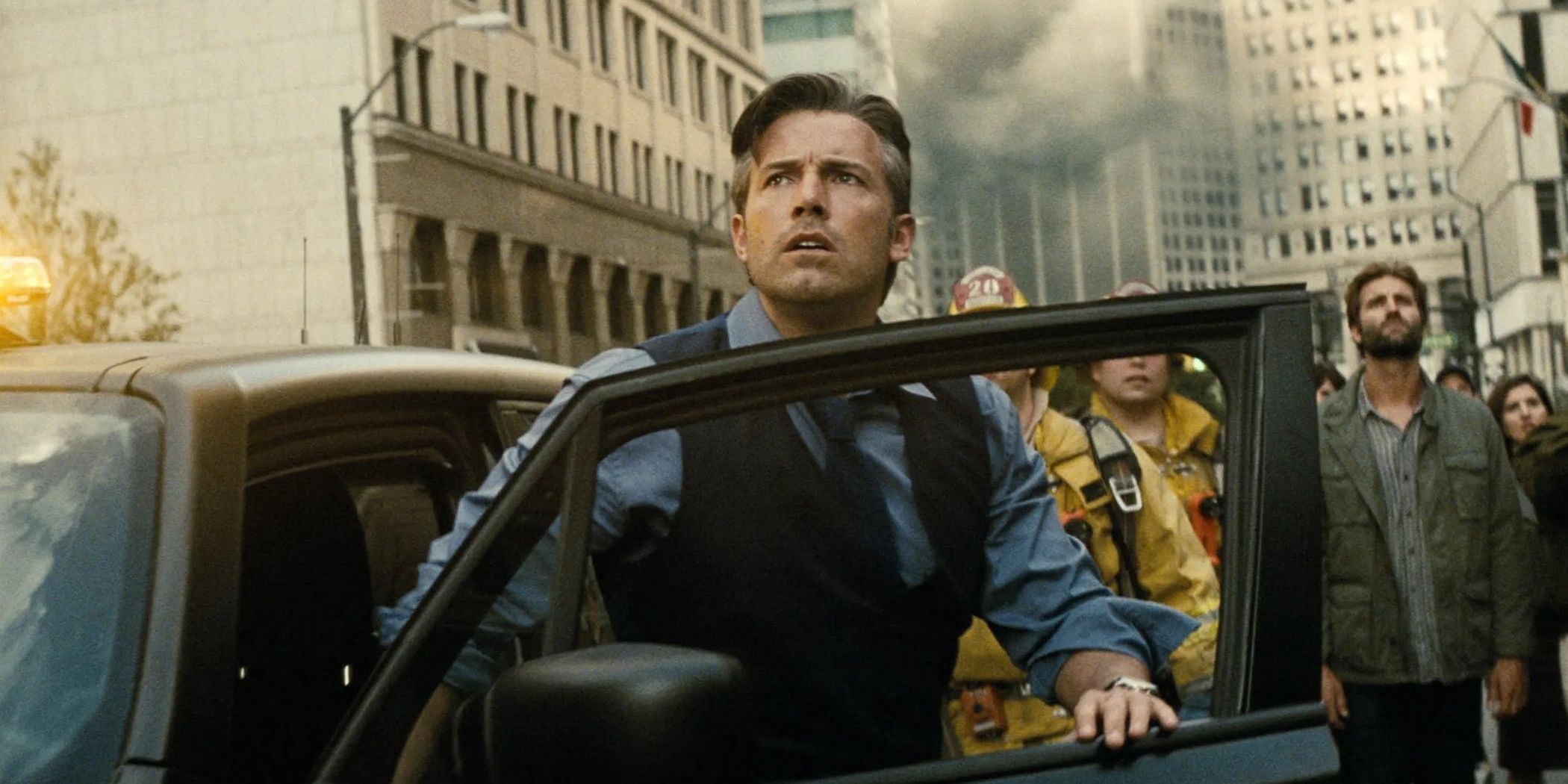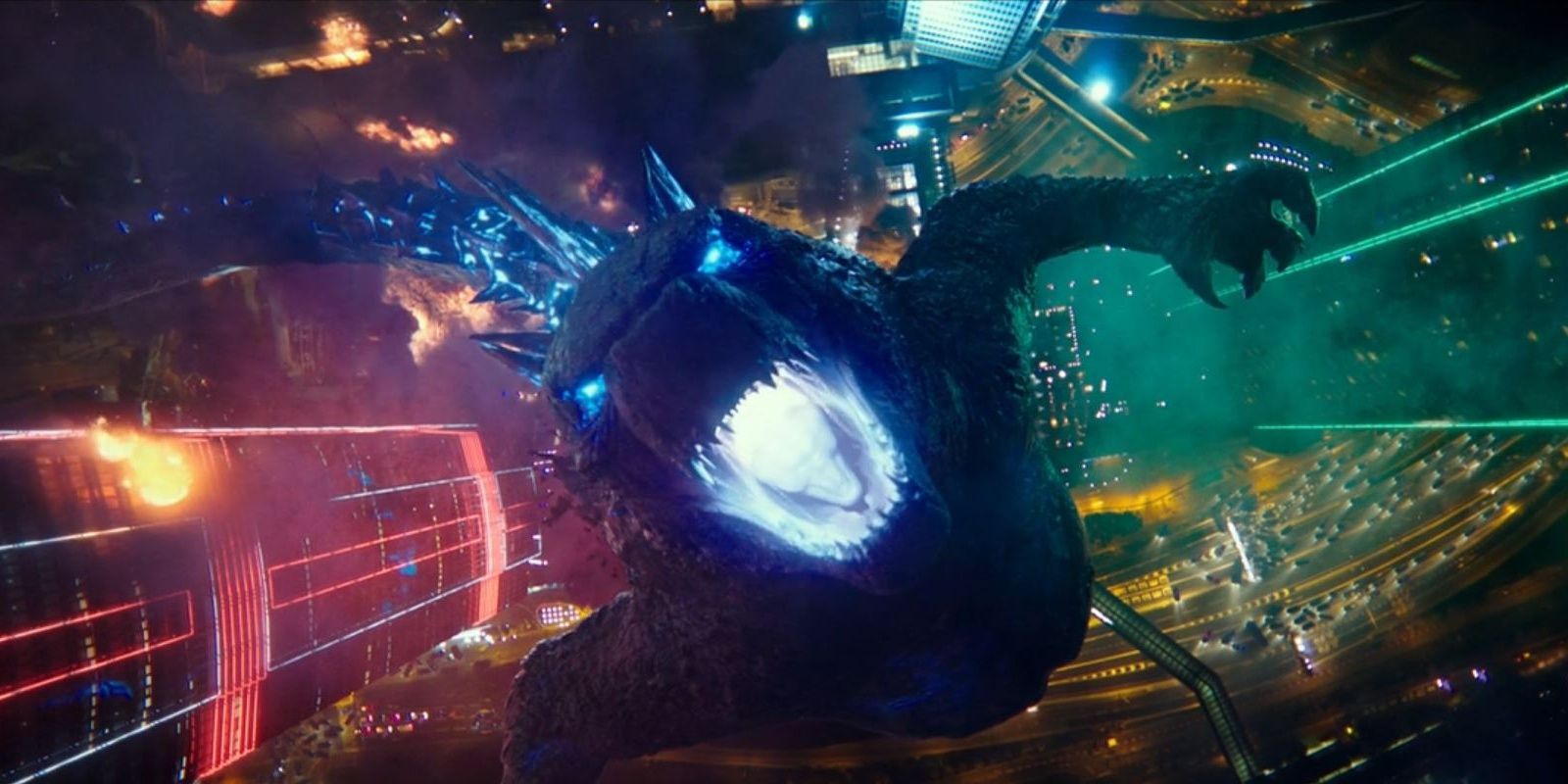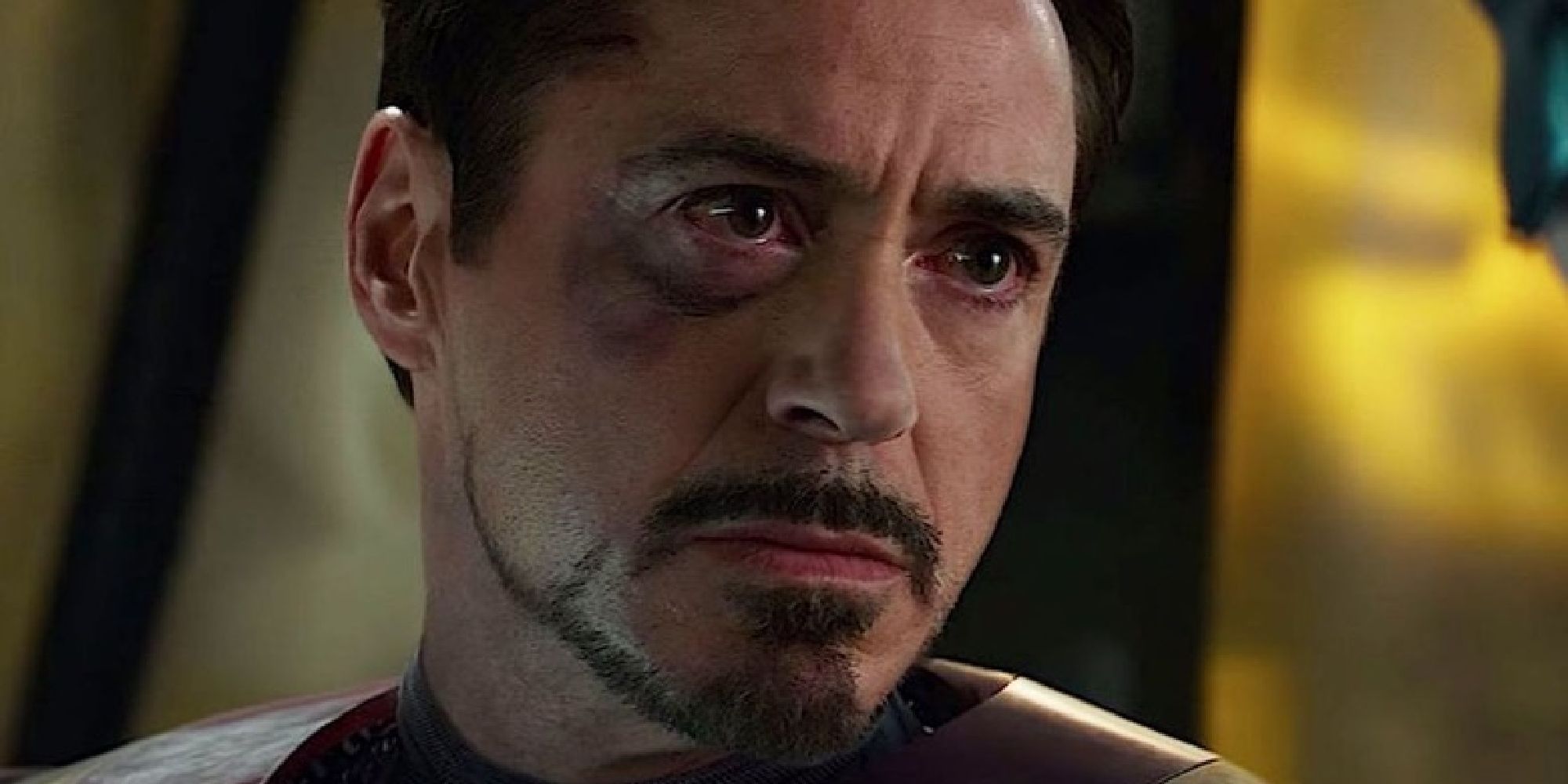The line between action and horror is determined almost entirely by the power of the protagonist. If they can fight back on relatively equal footing, even 100-to-1, that's an action film. If they mostly scream and run away, that's horror. But, power is relative, and an action situation to some could easily become a horror situation for others.
Think back to any big movie action scene. There's almost always going to be a few hundred screaming innocents running away or dying horribly in the event. The perspective of the average action film rarely leaves the main character, but a glance at everyone else changes things drastically.
The Bystander Action-Horror Dissonance trope occurs in stories with hugely powerful heroes and villains fighting to the death. To the hero and the audience, the fight is a compelling action struggle. However, it is a terrifying horror scenario for everyone who happens to be nearby. The most common way to depict this dissonance is the occasional slow pan over a screaming crowd amid a climactic battle. Almost every action movie clash will feature a healthy amount of collateral damage, and the humans caught in the crossfire are likely experiencing the scariest moment of their lives. When used well, this sudden injection of realism can establish the power of the hero, remind the audience of what's at stake, and shock them into considering how they might respond in the scenario. When handled poorly, it can make the hero look incompetent or cruel, or leave the audience disgusted.
This dissonance is present in multiple genres of film. Disaster films typically feature a handful of heroes who are likely to survive the chaos, while also depicting a million people who aren't so lucky, allowing them to abuse this dissonance as well. Kaiju films are probably the easiest example. It takes very little imagination to see Godzilla fight King Kong in an occupied metropolis as a horrific scenario and an equal brawl simultaneously. Audiences know to expect that the average person is as good as dead in against either a natural disaster or King Ghidora, so the dissonance is an accepted part of the experience. Superhero movies, on the other hand, can more effectively mine the aspects of superpowers that make their lead characters special for horror as well as action. These examples sometimes only take the form of a brief aside, but they can also be a central aspect of the narrative.
Both of the major superhero movie universes have made use of Bystander Action-Horror Dissonance as major plot points. The DCEU under Zack Snyder was heavily criticized for his use of wanton destruction in Man of Steel, which largely had the effect of making Superman look disinterested in saving lives. The battle against Zod is arguably the perfect example as a compelling struggle between the main characters turns into the leveling of a city and everyone in it with a simple camera movement. Snyder evidently took that criticism somewhat to heart, as the collateral damage is the primary motivation for Bruce Wayne to try to murder the Kryptonian in Batman v. Superman. Granted, Snyder's other films make it clear that this wasn't an intentional subversion, he just has very little interest in the survival of anyone who isn't one of his special heroes. There's perhaps no greater horror than being an unnamed character in a Zack Snyder action movie.
Marvel's take on the concept came in Civil War, which dealt with the idea of superheroes being regulated for the safety of the populace. An early scene depicts Wanda Maximoff reacting to a suicide bomber on short notice. She launches the bomb several stories up to get it out of the crowd, but it takes out a chunk of a nearby skyscraper, presumably killing several. The Avengers wind up in the office of Thaddeus Ross, who shows them and us a brief compilation of Action-Horror Dissonance on-screen. It's a series of clips from earlier Marvel films but from the perspective of the hundreds of people that the Avengers couldn't save. Even when the heroes win, people die in droves. It gives weight to the argument for or against regulation and forces the audience to grapple with the consequences either way.
The Bystander Action-Horror Dissonance trope is extremely common, but it doesn't always receive the focus of the audience. The camera in an action film doesn't always feel the need to fully explore the terrified locals. Sometimes the horror is depicted in the text, sometimes it comes up in later parodies, and sometimes it's just a thought in the heads of the audience. To a modern viewer, any big climactic action scene could easily be read as a nightmarish horror scene. Depicting the dissonance between those with power and those who must run and hide is fascinating. It could be used to say so much, but it could also just be used to shock the audience.



